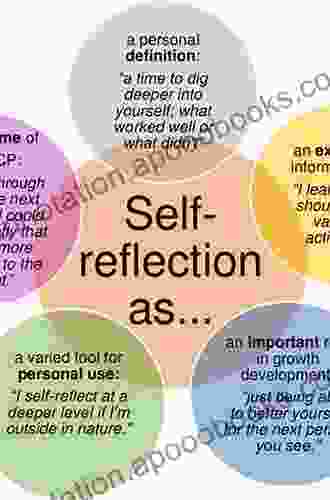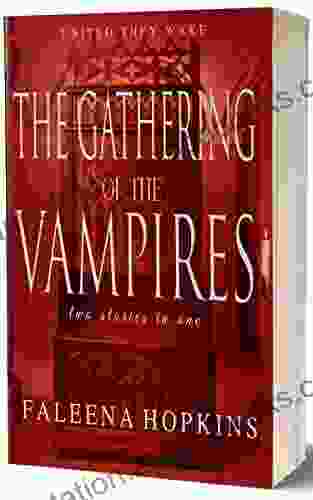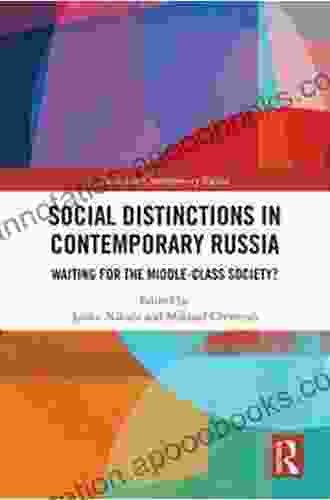How and Why We Still Read Jung: A Journey into the Collective Unconscious

In an age of increasing complexity and uncertainty, the work of Carl Jung is more essential than ever.
4.5 out of 5
| Language | : | English |
| File size | : | 1058 KB |
| Text-to-Speech | : | Enabled |
| Screen Reader | : | Supported |
| Enhanced typesetting | : | Enabled |
| Word Wise | : | Enabled |
| Print length | : | 370 pages |
| Lending | : | Enabled |
Jung's insights into the human psyche are a source of wisdom and guidance for those seeking to understand themselves and their place in the world.
In his book How and Why We Still Read Jung, acclaimed Jungian analyst Andrew Samuels explores the enduring relevance of Jung's work.
Samuels argues that Jung's ideas about the collective unconscious, archetypes, and individuation provide a profound understanding of the human experience.
Jung's work is also a source of inspiration and creativity. His ideas have been used by artists, writers, and musicians to create some of the most enduring works of our time.
In How and Why We Still Read Jung, Samuels provides a comprehensive overview of Jung's work. He also offers a personal account of his own experience with Jungian analysis.
This book is an essential read for anyone interested in Jungian psychology, depth psychology, or the human psyche.
The Collective Unconscious
One of Jung's most important concepts is the collective unconscious. The collective unconscious is a reservoir of images, symbols, and archetypes that is shared by all humans.
The collective unconscious is not something that we are aware of on a conscious level. However, it exerts a powerful influence on our thoughts, feelings, and behaviors.
Jung believed that the collective unconscious is a source of wisdom and creativity. He also believed that it is a source of psychological problems.
If we are not aware of the collective unconscious, it can sabotage our lives. However, if we are aware of it, we can use it to our advantage.
Archetypes
Jung believed that the collective unconscious is populated by archetypes. Archetypes are universal symbols that represent the basic patterns of human experience.
Some of the most common archetypes include the hero, the mother, the father, the child, and the wise old man.
Archetypes can appear in our dreams, our fantasies, and our works of art. They can also appear in our relationships and our social institutions.
Archetypes are a powerful force in our lives. They can help us to understand ourselves and our place in the world.
Individuation
Jung believed that the goal of life is individuation. Individuation is the process of becoming a whole and integrated individual.
Individuation is a lifelong process. It involves coming to terms with our shadow side, our anima/animus, and our Self.
The process of individuation can be difficult. However, it is also a rewarding journey.
Individuation leads to a greater sense of self-awareness, self-acceptance, and self-realization.
Dream Analysis
Jung believed that dreams are a window into the collective unconscious. He developed a method of dream analysis that can help us to understand our dreams and their meaning.
Jungian dream analysis is based on the idea that dreams are symbolic. The symbols in our dreams represent our thoughts, feelings, and experiences.
By interpreting the symbols in our dreams, we can gain a deeper understanding of ourselves and our lives.
Symbolism
Jung believed that symbolism is a universal language. Symbols can be found in all aspects of human culture, from art to religion to myth.
Jung developed a system of symbol interpretation that can help us to understand the meaning of symbols.
By understanding the meaning of symbols, we can gain a deeper understanding of ourselves and the world around us.
Psychoanalysis
Jung was a pioneer in the field of psychoanalysis. He developed a method of psychoanalysis that is based on his understanding of the collective unconscious, archetypes, and individuation.
Jungian psychoanalysis is a deep and transformative therapy. It can help us to understand our unconscious motivations and to resolve our psychological problems.
Jungian psychoanalysis is not for everyone. However, it can be a life-changing experience for those who are ready to embark on a journey of self-discovery.
Depth Psychology
Jung's work is often referred to as depth psychology. Depth psychology is a school of psychology that focuses on the unconscious mind.
Depth psychology is based on the idea that the unconscious mind is a rich source of wisdom and creativity.
Depth psychology can be used to treat a wide range of psychological problems, from anxiety and depression to addiction and trauma.
Depth psychology is a powerful tool for self-discovery and self-realization.
In How and Why We Still Read Jung, Andrew Samuels provides a comprehensive overview of Jung's work. He also offers a personal account of his own experience with Jungian analysis.
This book is an essential read for anyone interested in Jungian psychology, depth psychology, or the human psyche.
Jung's work is a source of wisdom and guidance for those seeking to understand themselves and their place in the world.
In an age of increasing complexity and uncertainty, Jung's work is more essential than ever.
4.5 out of 5
| Language | : | English |
| File size | : | 1058 KB |
| Text-to-Speech | : | Enabled |
| Screen Reader | : | Supported |
| Enhanced typesetting | : | Enabled |
| Word Wise | : | Enabled |
| Print length | : | 370 pages |
| Lending | : | Enabled |
Do you want to contribute by writing guest posts on this blog?
Please contact us and send us a resume of previous articles that you have written.
 Book
Book Novel
Novel Page
Page Chapter
Chapter Text
Text Story
Story Genre
Genre Reader
Reader Library
Library Paperback
Paperback E-book
E-book Magazine
Magazine Newspaper
Newspaper Paragraph
Paragraph Sentence
Sentence Bookmark
Bookmark Shelf
Shelf Glossary
Glossary Bibliography
Bibliography Foreword
Foreword Preface
Preface Synopsis
Synopsis Annotation
Annotation Footnote
Footnote Manuscript
Manuscript Scroll
Scroll Codex
Codex Tome
Tome Bestseller
Bestseller Classics
Classics Library card
Library card Narrative
Narrative Biography
Biography Autobiography
Autobiography Memoir
Memoir Reference
Reference Encyclopedia
Encyclopedia Christopher Charlton
Christopher Charlton Orestes Augustus Brownson
Orestes Augustus Brownson Ciro Plateroti
Ciro Plateroti Chuck Barrett
Chuck Barrett Chronicle Books
Chronicle Books Chauncey Monte Sano
Chauncey Monte Sano Ross Silke
Ross Silke Ed Adams
Ed Adams Ian Reifowitz
Ian Reifowitz Christine Porter
Christine Porter Cheryl K Chumley
Cheryl K Chumley Chet Atkins
Chet Atkins Chelsea Luna
Chelsea Luna Phuong Tran Nguyen
Phuong Tran Nguyen Christopher Marsh
Christopher Marsh Michelle Rawlins
Michelle Rawlins Julie Murphy
Julie Murphy Cherie Mitchell
Cherie Mitchell Chris Cheek
Chris Cheek Claire Vaye Watkins
Claire Vaye Watkins
Light bulbAdvertise smarter! Our strategic ad space ensures maximum exposure. Reserve your spot today!
 Douglas FosterFollow ·18.6k
Douglas FosterFollow ·18.6k Virginia WoolfFollow ·8.6k
Virginia WoolfFollow ·8.6k Oscar WildeFollow ·19.4k
Oscar WildeFollow ·19.4k Hamilton BellFollow ·7.3k
Hamilton BellFollow ·7.3k Gustavo CoxFollow ·5.1k
Gustavo CoxFollow ·5.1k Fletcher MitchellFollow ·13.7k
Fletcher MitchellFollow ·13.7k Allan JamesFollow ·5.6k
Allan JamesFollow ·5.6k Gabriel MistralFollow ·9.1k
Gabriel MistralFollow ·9.1k

 Kevin Turner
Kevin TurnerDive into the Enchanting World of "Crazy Like Fox": A...
Prepare yourself for a literary adventure...
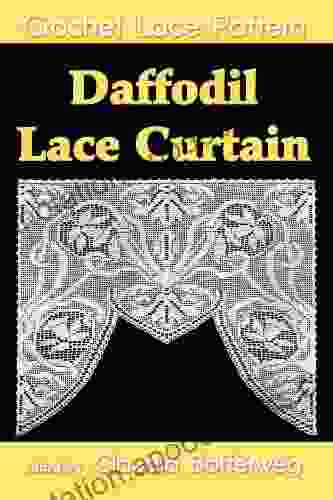
 Ralph Waldo Emerson
Ralph Waldo EmersonUnlock the Elegance of Daffodil Lace: An Immersive Guide...
: A Tapestry of Delicate...
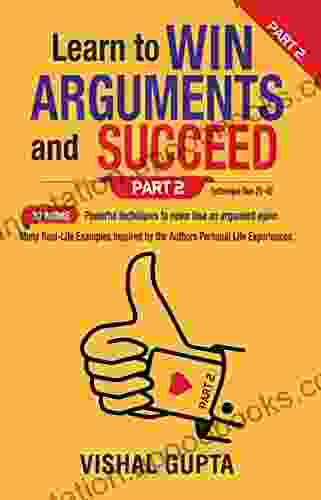
 Gerald Parker
Gerald ParkerNever Lose An Argument Again: 20 Powerful Techniques From...
Are you tired of losing...
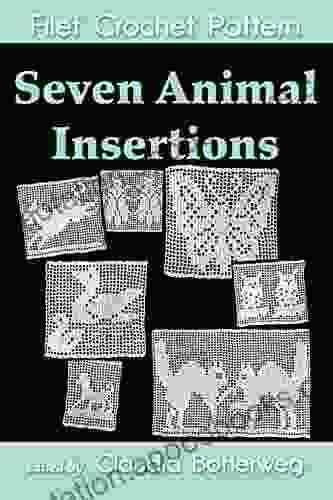
 Xavier Bell
Xavier BellSeven Animal Insertions Filet Crochet Pattern: Embark on...
Welcome to the captivating...

 Eugene Powell
Eugene PowellMagomago in TDS Magomago 12: An Unforgettable Adventure...
Step into the Enchanting World of...

 Marvin Hayes
Marvin HayesSoft Felting Needle Holder Excellence In Reborn Artistry
Unveiling the Secrets of the...
4.5 out of 5
| Language | : | English |
| File size | : | 1058 KB |
| Text-to-Speech | : | Enabled |
| Screen Reader | : | Supported |
| Enhanced typesetting | : | Enabled |
| Word Wise | : | Enabled |
| Print length | : | 370 pages |
| Lending | : | Enabled |


